New Abandoned Places: Side Effects of the “Miracle Architecture” in Spain
Abstract
Across the turn of the 21th century, Spain was interested by a florid period of public and private architectural investments, driven by the so-called “Bilbao effect,” which is believed to start with the construction of Gehry’s Guggenheim in Bilbao. However, the global financial crisis determined a period of economic stagnation with a subsequent hardship for the whole architectural sector, in which numerous projects failed to launch, and an equal number of already started projects were stopped in their construction. Consequently, Spain is now facing a new phenomenon: the existence of many buildings either left unfinished, or finished but never used, or even closed just after a short time after their opening. How many failed cases can we find in the Spanish territory? Can we consider them as rubbles, which continue to be a cost for the collectivity? The present paper considers this situation, aiming to understand the phenomenon of the abandonment of new architectures, through the analysis of selected case studies which are represented by iconic buildings utilized for cultural as well as touristic purposes. The objectives of this paper are: 1) find a relation between the general phenomenon of the “abandonment of the new” and the Spanish territory, 2) find how such new spaces have caused negative consequences for the communities of the concerned territories, 3) find how it’s possible to regenerate-integrate those abandoned architectures.
Nuovi luoghi dell’abbandono: effetti collaterali dell’”Architettura Miracolosa” in Spagna
A cavallo tra il XX ed il XXI secolo, la Spagna è stata interessata da un florido periodo di investimenti sia pubblici che privati in architettura, guidato dal cosiddetto “Effetto Bilbao”, che si suppone abbia inizio con la costruzione del museo Guggenheim nella città basca, ad opera dell’architetto Frank Gehry. Tuttavia, la crisi globale ha determinato un periodo di stagnazione economica, che ha portato alla stasi edilizia. La penisola iberica è oggi di fronte a un nuovo fenomeno: l’esistenza di un gran numero di edifici non finiti, o finiti e mai utilizzati, o ancora chiusi e abbandonati dopo un breve periodo. Quanti casi si possono trovare nel territorio spagnolo? Possono considerarsi come macerie, che in molti casi continuano ad essere un costo per la collettività, in attesa di essere demoliti? Il seguente saggio considera questa situazione, al fine di comprendere meglio il fenomeno dell’abbandono delle nuove architetture, attraverso la selezione dei casi studio rappresentati da edifici iconici utilizzati per fini turistico-culturali. Gli obiettivi di questo saggio sono: 1) trovare una relazione tra il generale fenomeno dell’”abbandono del nuovo” e il territorio spagnolo, 2) descrivere come questi nuovi spazi dell’abbandono abbiano determinato conseguenze negative per le comunità dei territori interessati 3) delineare possibili scenari di rigenerazione-integrazione per tali architetture abbandonate.
Parole chiave
Full Text
PDF (English)DOI: https://doi.org/10.14633/AHR295
Refback
- Non ci sono refbacks, per ora.
Copyright (c) 2020 Dario Giordanelli

This work is licensed under a Creative Commons Attribution-NonCommercial 4.0 International License.
........................................................................................................................................................................................................................................................................................................................................................
ArcHistoR è una rivista open access e peer reviewed (double blind), di Storia dell’architettura e Restauro, pubblicata con cadenza semestrale dall'Università Mediterranea di Reggio Calabria (Laboratorio CROSS - Storia dell'architettura e Restauro, dAeD - Dipartimento di Architettura e Design).
ISSN 2384-8898
![]()

Comitato scientifico internazionale
Maria Dolores Antigüedad del Castillo-Olivares, Monica Butzek, Jean-François Cabestan, Alicia Cámara Muñoz, David Friedman, Alexandre Gady, Jörg Garms, Miles Glenndinning, Mark Wilson Jones, Loughlin Kealy, Paulo Lourenço, David Marshall, Werner Oechslin, José Luis Sancho, Dmitrij O. Švidkovskij
Comitato direttivo
Tommaso Manfredi (direttore responsabile), Giuseppina Scamardì (direttrice editoriale), Antonello Alici, Salvatore Di Liello, Fabrizio Di Marco, Paolo Faccio, Mariacristina Giambruno, Bruno Mussari, Annunziata Maria Oteri, Francesca Passalacqua, Edoardo Piccoli, Renata Prescia, Nino Sulfaro, Fabio Todesco, Guglielmo Villa
 .
. 


2.jpg)
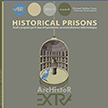
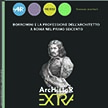
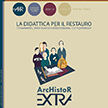

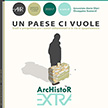
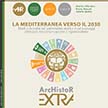
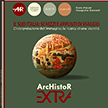


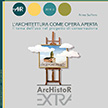

_2.jpg) .
. 
 .
. 

